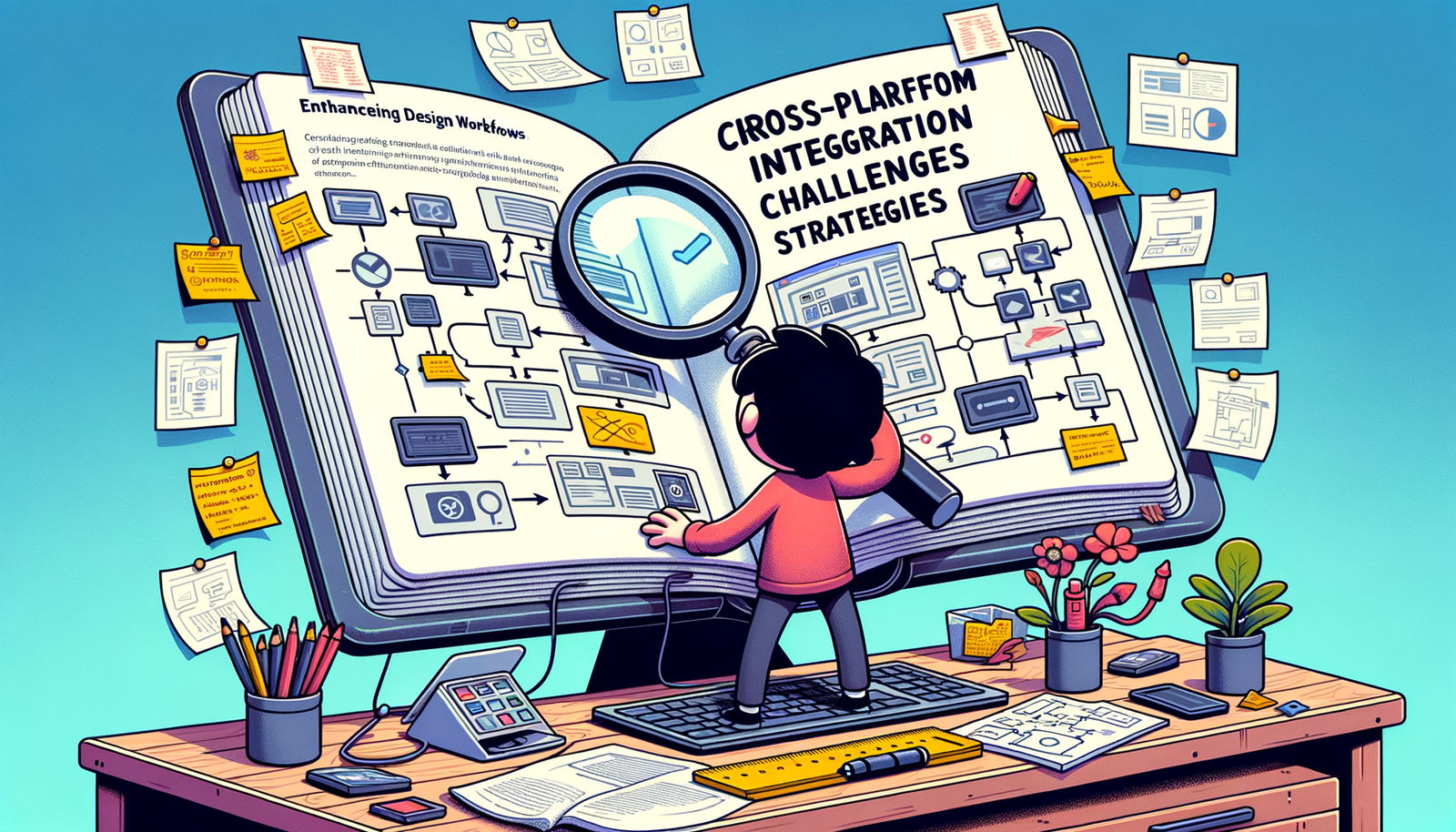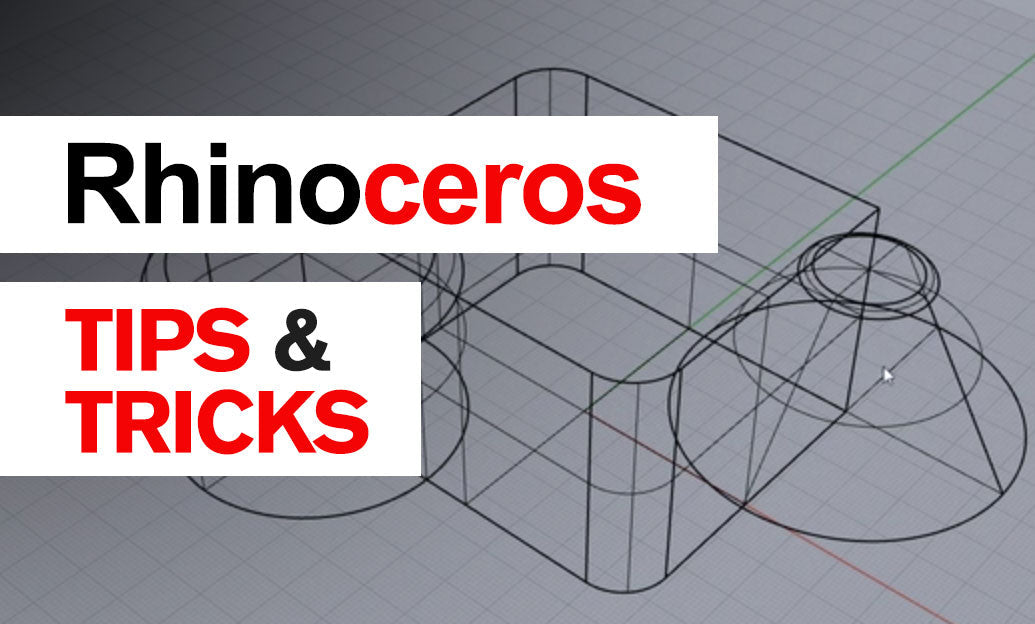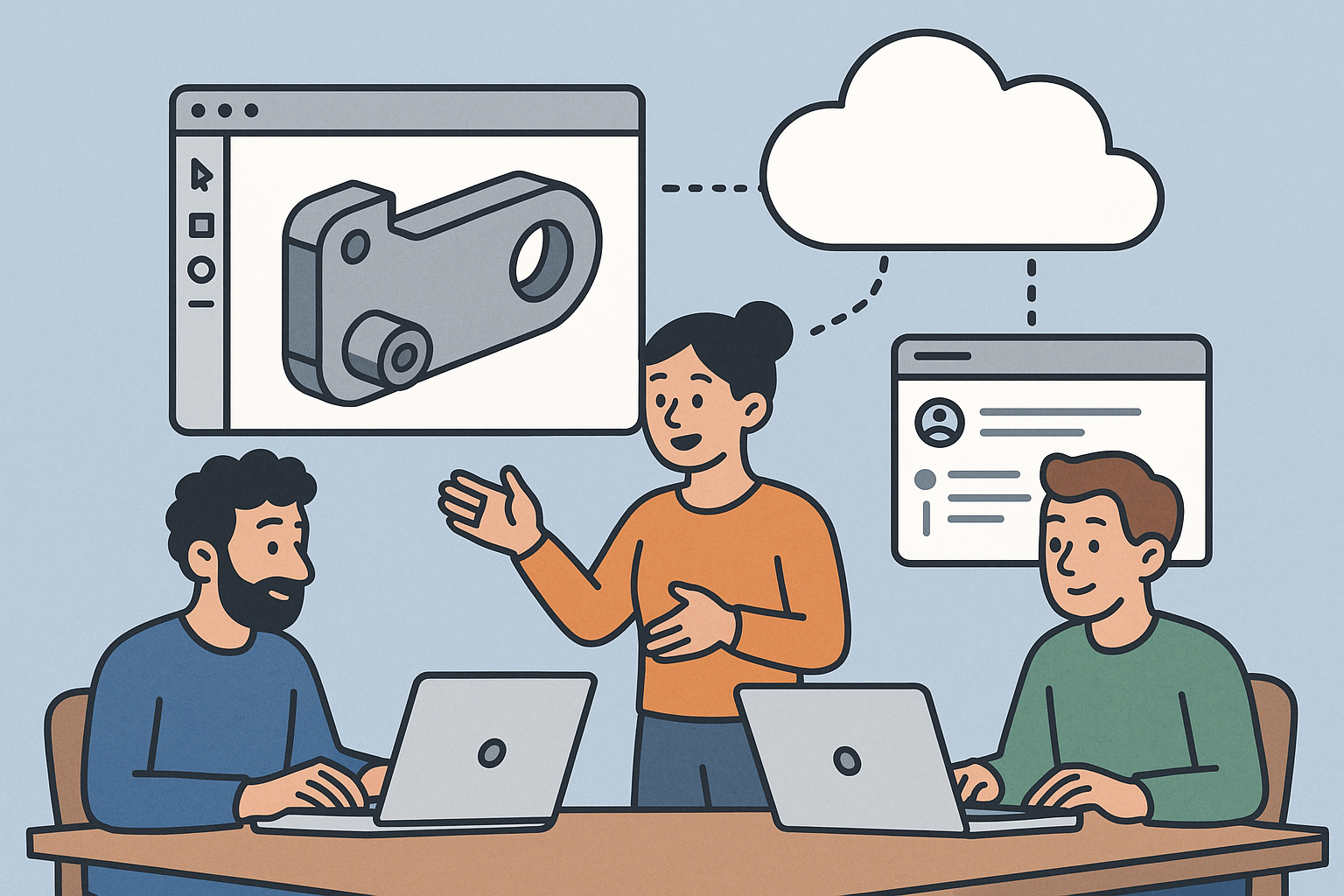Your Cart is Empty
Customer Testimonials
-
"Great customer service. The folks at Novedge were super helpful in navigating a somewhat complicated order including software upgrades and serial numbers in various stages of inactivity. They were friendly and helpful throughout the process.."
Ruben Ruckmark
"Quick & very helpful. We have been using Novedge for years and are very happy with their quick service when we need to make a purchase and excellent support resolving any issues."
Will Woodson
"Scott is the best. He reminds me about subscriptions dates, guides me in the correct direction for updates. He always responds promptly to me. He is literally the reason I continue to work with Novedge and will do so in the future."
Edward Mchugh
"Calvin Lok is “the man”. After my purchase of Sketchup 2021, he called me and provided step-by-step instructions to ease me through difficulties I was having with the setup of my new software."
Mike Borzage
Enhancing Design Workflows: Navigating Cross-Platform Integration Challenges and Strategies
October 13, 2024 7 min read


Introduction to Cross-Platform Integration
Cross-platform integration in the realm of design software refers to the seamless interaction and interoperability between different design tools and platforms. In an industry where creativity and efficiency are paramount, designers often find themselves utilizing multiple software applications to fulfill various aspects of their projects. Whether it's 3D modeling, rendering, animation, or simulation, each task may require specialized software. Cross-platform integration enables these disparate tools to communicate effectively, allowing data and assets to be transferred smoothly without loss of information or functionality. This integration is not just about compatibility; it's about creating a unified workflow where the boundaries between different software solutions are effectively bridged, enhancing productivity and fostering innovation.
In the modern design workflow, the importance of interoperability among various design tools and systems cannot be overstated. As projects grow in complexity, the need for collaborative efforts across different disciplines and teams becomes essential. Engineers, architects, and product designers often need to collaborate, each using specialized tools tailored to their expertise. Without effective cross-platform integration, this collaboration can become cumbersome, leading to inefficiencies and miscommunication. Interoperability ensures that team members can work within their preferred tools while still contributing to a cohesive project. It facilitates better communication, reduces errors, and accelerates the design process by eliminating unnecessary barriers.
The benefits of seamless integration for design professionals and teams are manifold. Firstly, it enhances efficiency by reducing the time spent on converting or reworking files to be compatible with different software. This time-saving aspect allows designers to focus more on creativity and less on technical hurdles. Secondly, it improves accuracy by minimizing the risk of data loss or corruption that can occur during file transfers between incompatible systems. Thirdly, seamless integration promotes collaboration by enabling team members to share and access each other's work with ease. By leveraging cross-platform integration, design teams can harness the full potential of their collective skills and tools, leading to higher quality outputs and more innovative solutions.
Challenges of Cross-Platform Integration
While the concept of cross-platform integration offers significant advantages, there are several challenges that design professionals frequently encounter. One of the primary obstacles is compatibility issues between software platforms. Many design tools are developed by different companies with proprietary file formats and technologies. As a result, importing and exporting files between these platforms can be problematic. For instance, a 3D model created in one software might not retain all its properties when opened in another, leading to loss of detail or functionality. These compatibility issues can hinder the workflow, forcing designers to find workarounds that may not always be efficient or effective.
Another significant challenge is the risk of data loss or corruption during transfers. When files are converted from one format to another, there's a possibility that essential information might be lost or altered. This can include loss of metadata, textures, animations, or other critical elements of a design. Data corruption can occur due to differences in how software interprets certain features or due to errors in the conversion process. Such mishaps can have a cascading effect on a project, potentially requiring substantial rework to recover lost elements or correct inaccuracies introduced during the transfer.
Additionally, the variability in user interfaces and workflows across tools presents a challenge for designers attempting to integrate multiple platforms. Each software has its unique interface, shortcuts, and methods of operation. Switching between tools can disrupt a designer's workflow, requiring them to adjust to different environments constantly. This variability can slow down the design process and increase the likelihood of errors as users may inadvertently apply the wrong workflows or commands. It can also make training and onboarding more complex, as team members need to become proficient in multiple tools with differing interfaces.
The impact of these challenges on productivity and project timelines can be substantial. Compatibility issues and data loss can lead to delays as teams spend additional time troubleshooting problems rather than focusing on creative tasks. The need to manually correct errors or rework designs can consume resources and extend deadlines. Moreover, the cognitive load associated with navigating different user interfaces can lead to fatigue and decreased efficiency among designers. Collectively, these challenges can hinder collaboration, reduce the overall quality of the design output, and increase project costs.
Strategies for Effective Cross-Platform Integration
To overcome the challenges associated with cross-platform integration, design professionals can employ several effective strategies. One of the most powerful approaches is the use of Application Programming Interfaces (APIs) to enable communication between different software. APIs allow developers to create custom solutions that facilitate data exchange and functionality between applications. By leveraging APIs, teams can automate workflows, synchronize data, and even extend the capabilities of existing tools. This approach not only bridges gaps between software platforms but also allows for the customization of integration processes to suit specific project needs.
Another crucial strategy is the adoption of industry standards and protocols for data sharing. Standards such as the Industry Foundation Classes (IFC) for building information modeling or the Standard for the Exchange of Product model data (STEP) ensure that data is structured in a consistent and universally recognized format. By adhering to these standards, designers can greatly reduce compatibility issues and simplify the process of transferring files between different tools. Industry standards promote interoperability by providing a common language for software applications, thereby minimizing data loss and errors during exchanges.
Leveraging cloud-based solutions for real-time collaboration is also an effective strategy for cross-platform integration. Cloud platforms enable designers to work on shared projects simultaneously, regardless of the software they are using. These solutions often provide centralized data storage and management, ensuring that all team members have access to the most up-to-date information. Cloud-based tools can offer features such as version control, access permissions, and real-time updates, which enhance collaboration and streamline workflows. By utilizing the cloud, teams can reduce the reliance on local software compatibility and focus on the collective progress of the project.
To clarify these strategies, consider the following key points:
-
Implement APIs:
- Automate repetitive tasks across platforms.
- Customize integrations to meet specific workflow requirements.
- Enhance existing software functionalities.
-
Adopt Industry Standards:
- Ensure consistent data structuring and formatting.
- Facilitate smoother data exchanges between different tools.
- Reduce the risk of data loss and corruption.
-
Utilize Cloud-Based Collaboration:
- Enable real-time collaboration across different locations and tools.
- Provide centralized data management and version control.
- Minimize compatibility dependencies on local systems.
These strategies have been successfully applied in various industries. In architecture, for example, firms often integrate CAD software with BIM tools using APIs and industry standards to create comprehensive models that combine detailed designs with building data. In product design, companies might use cloud-based platforms to allow engineers and designers to collaborate on complex models in real-time, regardless of whether they are using different CAD applications. By adopting such strategies, organizations can enhance their design processes, improve collaboration among team members, and deliver projects more efficiently.
Future Trends in Cross-Platform Design Software
Looking ahead, several emerging trends are set to revolutionize cross-platform integration in design software. One such trend is the increasing use of artificial intelligence (AI) and machine learning in integration processes. AI can be employed to automate complex tasks involved in data translation and synchronization between different platforms. Machine learning algorithms can learn from previous integration attempts to improve accuracy and efficiency over time. For instance, AI could predict and resolve compatibility issues before they occur, or automatically map equivalent functions and features between different software tools. This intelligent approach to integration could significantly reduce manual effort and errors, leading to more seamless workflows.
Another anticipated development is the growth of modular design systems that promote flexibility and reusability. Modular design involves creating components or modules that can be easily combined and rearranged to form complex systems. In the context of software, this means developing tools that are inherently designed to work together through standardized interfaces or modules. Such systems enable designers to mix and match tools and features from different platforms without worrying about compatibility issues. This modularity not only enhances flexibility but also allows for more personalized workflows, as designers can tailor their toolsets to their specific needs.
Enhanced collaboration through virtual and augmented reality tools is also expected to play a significant role in the future of cross-platform integration. Virtual Reality (VR) and Augmented Reality (AR) technologies offer immersive environments where design teams can interact with 3D models and simulations in real-time, regardless of their physical location or the software they are using. By integrating VR and AR into design workflows, professionals can experience designs in a more intuitive and interactive way, providing deeper insights and fostering better collaboration. These technologies can act as platforms themselves, integrating inputs from various software tools into a unified, immersive experience.
The potential impact of these advancements on the design profession is profound. The incorporation of AI and machine learning can elevate efficiency and innovation, allowing designers to focus more on creative aspects rather than technical challenges. Modular design systems could democratize the design process, making advanced tools more accessible and customizable. The advent of VR and AR in collaboration can break down geographical barriers, enabling global teams to work together seamlessly. Collectively, these trends could lead to a more integrated, efficient, and innovative design industry, where cross-platform barriers are minimized, and the full potential of collaborative creativity is realized.
Conclusion
In conclusion, cross-platform integration is a critical component in modern design workflows, enabling seamless collaboration and enhancing productivity among design professionals. By bridging the gaps between various design tools and platforms, integration allows for a more unified and efficient design process. It eliminates the obstacles posed by compatibility issues, data loss, and workflow discrepancies, thereby empowering designers to focus on innovation and creativity. The significance of cross-platform integration lies not only in improving individual workflows but also in fostering a collaborative environment where teams can leverage diverse tools and expertise to achieve common goals.
As the industry continues to evolve, it is imperative for design professionals to embrace integration tools and strategies that improve collaboration and efficiency. By adopting APIs, industry standards, and cloud-based solutions, designers can overcome the challenges associated with using multiple software platforms. This proactive approach to integration can lead to better project outcomes, reduced timelines, and increased competitiveness in the marketplace. Design teams that prioritize cross-platform integration are better equipped to handle complex projects, adapt to changing technologies, and meet the growing demands of clients and stakeholders.
Furthermore, staying informed about emerging trends and technologies is crucial for professionals who wish to remain at the forefront of the design industry. The advancements in AI, machine learning, modular design systems, and immersive technologies like VR and AR are set to redefine how integration is approached. By keeping abreast of these developments, designers can anticipate changes, acquire new skills, and incorporate cutting-edge tools into their workflows. Embracing these innovations will not only enhance individual capabilities but also contribute to shaping a more integrated and dynamic future for the design profession.
Also in Design News

Rhino 3D Tip: ReplaceBlock: Batch update block instances from external files while preserving transforms
December 23, 2025 2 min read
Read More
Design Software History: Collaboration in Design Software: From File-Based PDM to Cloud-Native Co-Editing and Design Threads
December 23, 2025 9 min read
Read More
End-to-End Encryption for CAD/PLM: Protecting Design IP in Cloud Workflows
December 23, 2025 13 min read
Read MoreSubscribe
Sign up to get the latest on sales, new releases and more …


